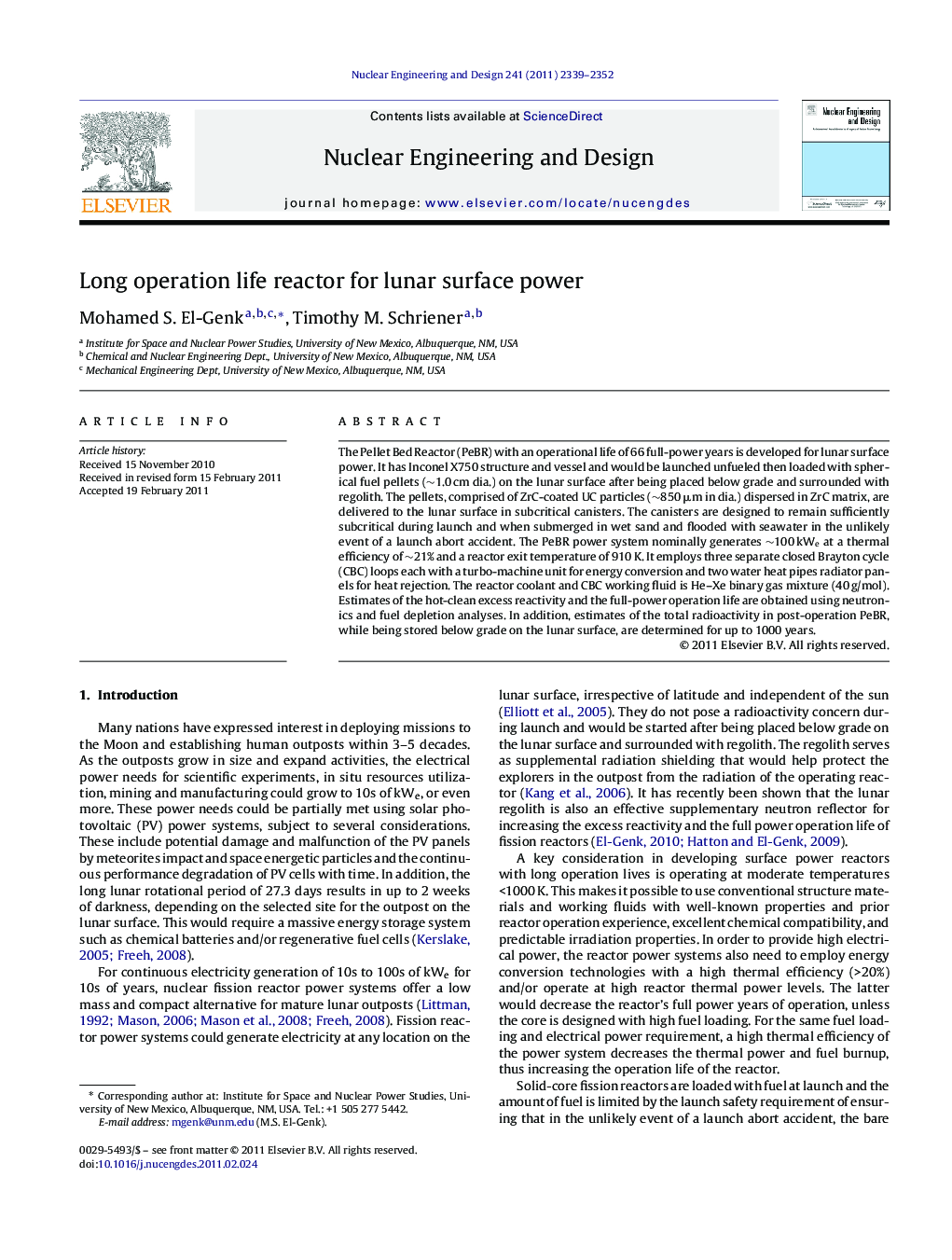| Article ID | Journal | Published Year | Pages | File Type |
|---|---|---|---|---|
| 298127 | Nuclear Engineering and Design | 2011 | 14 Pages |
The Pellet Bed Reactor (PeBR) with an operational life of 66 full-power years is developed for lunar surface power. It has Inconel X750 structure and vessel and would be launched unfueled then loaded with spherical fuel pellets (∼1.0 cm dia.) on the lunar surface after being placed below grade and surrounded with regolith. The pellets, comprised of ZrC-coated UC particles (∼850 μm in dia.) dispersed in ZrC matrix, are delivered to the lunar surface in subcritical canisters. The canisters are designed to remain sufficiently subcritical during launch and when submerged in wet sand and flooded with seawater in the unlikely event of a launch abort accident. The PeBR power system nominally generates ∼100 kWe at a thermal efficiency of ∼21% and a reactor exit temperature of 910 K. It employs three separate closed Brayton cycle (CBC) loops each with a turbo-machine unit for energy conversion and two water heat pipes radiator panels for heat rejection. The reactor coolant and CBC working fluid is He–Xe binary gas mixture (40 g/mol). Estimates of the hot-clean excess reactivity and the full-power operation life are obtained using neutronics and fuel depletion analyses. In addition, estimates of the total radioactivity in post-operation PeBR, while being stored below grade on the lunar surface, are determined for up to 1000 years.
► We developed a nuclear reactor with >66 year operation life for surface power. ► The reactor, placed below grade and surrounded by regolith, is loaded with fuel pellet on the Moon. ► Fuel pellets are launched in separate subcritical canisters. ► Examined is the effect of using lunar regolith reflector on the launch mass.
